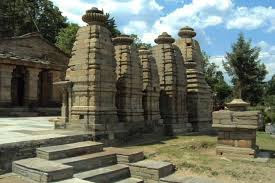Do you know about the land of appearing and disappearing
islands?
Phenomena like this somehow connect your thoughts either to
the mystical surrounding of the Bermuda Triangle or to the abnormal calmness of
the Pacific Ocean. However, you will be astonished to find out that these
miraculous occurrences take place in the mangrove forest of
Sundarbans national park . Peacefully residing on the edges of Bay of Bengal, the forest covers an area of 9600sq.km., out of which one part of its vast precinct falls in the Republic of India and the other part falls in the People's Republic of Bangladesh.
Sundarbans national park . Peacefully residing on the edges of Bay of Bengal, the forest covers an area of 9600sq.km., out of which one part of its vast precinct falls in the Republic of India and the other part falls in the People's Republic of Bangladesh.
Although the national park holds the distinction of being
the largest estuarine forest on this planet shielding a wide variety of rare
species, the place has been a talking point amongst the travel enthusiasts, and
adventure seekers for the small and big isles that keep on emerging and
vanishing. Sundarbans is an archipelago of wonderful islands that keep on
changing every time one revisits the place. Navigating through its treacherous
waterways will open getaway to the secret colonies of many rare birds, mammals,
and reptiles which have lost grounds in other parts of the world. It seems that the thick covers of Sundari trees have created a safe
haven for these gorgeous as well as critically endangered species.
The winds coming from the east will not only caress your
face with its soft breeze but will also tickle your ears with the symphonic
calls of highly sought-after Mangrove Whsitlers, Grey-headed fish eagle,
Cinnamon bittern, Loten's sunbird, Brown-winged kingfisher, Black-capped
kingfisher, Brown-cheeked fulvetta, etc. There will be many unusual elements
that will draw your attention once you start penetrating inside the jungle's
mystical surroundings. The overwhelming search to sight the fabled Tiger might
lay your eyes on the Saltwater crocodile basking on the placid water of
Brahmaputra river before draining in the Bay of Bengal. The unique geometry of
Russell's viper camouflaged in the surrounding to prey on Fejervarya raja
popularly known as Crab-eating frog is an interesting spectacle for any Herping
enthusiast. During day-time, the sanctuary is a frolic place for Chital, Wild
Boar, Macaques, however, the night transforms this very sanctuary into the
savage world of Bengal Tigers.
The exquisite life thriving on the land doesn't overshadow
the enchanting world of marine life thriving right below the ground. While
cruising through the forest on a boat to track down the majestic gait of Bengal Tiger, you will surely be captivated by the sudden dive of the rarely sighted
Gangetic Dolphins. It is fascinating to see how Sundarbans has become a
paradise for many species of Dolphins which have currently become endangered
due to global warming.
Besides dolphins, the presence of Olive ridley sea turtle,
Hawksbill sea turtle, Mangrove horseshoe crab, Northern river terrapin,
Mudskipper, Green Turtle, Electric Ray Fish unveil the unexplored wilderness
residing in the waters of Sundarbans. Exuding with unique colors glowing from
beneath the waters explains a unique relationship shared between the rivers and
the sea that ultimately meets
the ocean.
the ocean.
www.asianadventures.in
info@asianadventures.in
Phone : +91 8010850000
https://linktr.ee/aatoursandlodges

























